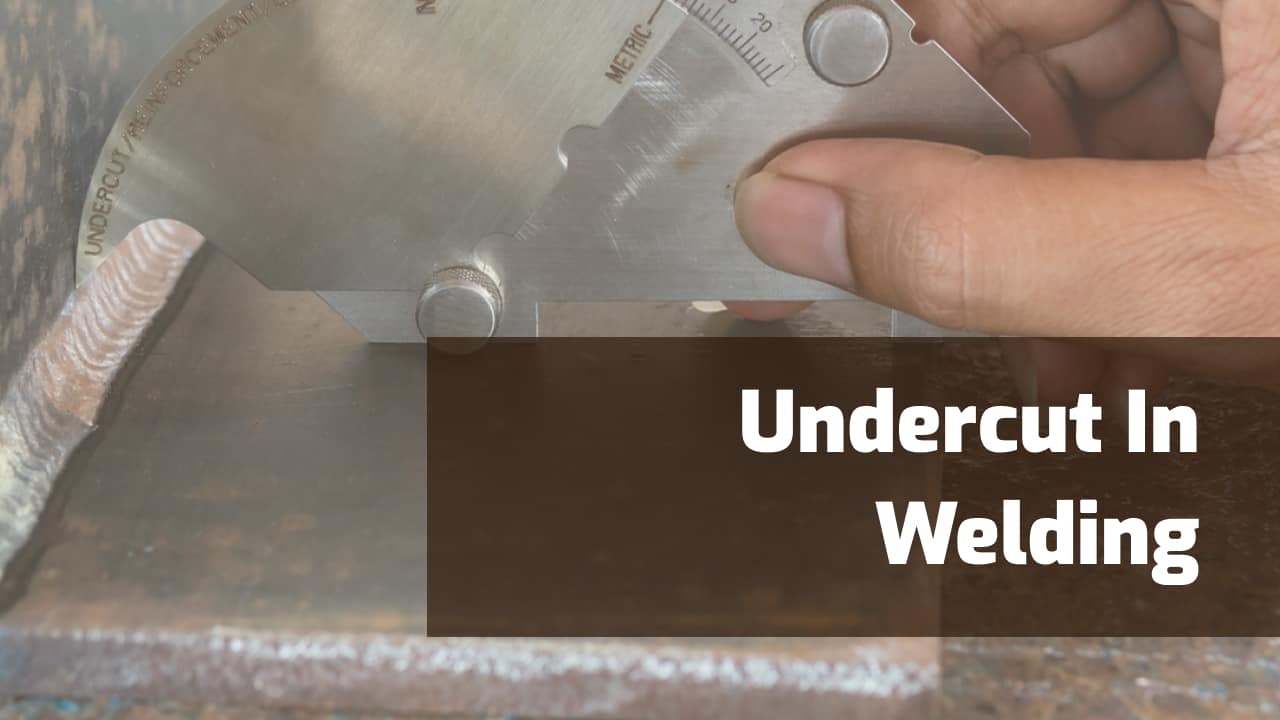Specialist Techniques for Preventing Weld Undercut Efficiently
Specialist Techniques for Preventing Weld Undercut Efficiently
Blog Article
Understanding the Causes and Solutions for Undercut Welding in Metal Fabrication Processes
In the realm of metal fabrication processes, the occurrence of undercut welding poses a significant challenge that demands a comprehensive understanding of its causes and viable solutions. The intricate interplay of various variables throughout welding procedures can cause this unfavorable phenomenon, impacting the structural integrity and total top quality of the bonded joints - Preventing weld undercut. By exploring the source of undercut welding and discovering reliable restorative steps, fabricators can elevate the criterion of their handiwork and make sure the production of flawless steel elements
Common Root Causes Of Undercut Welding
Often forgotten in metal fabrication, undercut welding happens due to different variables that require meticulous attention and know-how to be successfully alleviated. In addition, inappropriate welding strategies, such as using the wrong welding angle or travel speed, can also contribute to undercut formation. The option of welding specifications, such as voltage, present, and cable feed speed, plays a considerable function in the incident of undercut welding.
Effect of Incorrect Welding Parameters
Unreliable welding specifications can dramatically endanger the honesty and top quality of welded joints in metal fabrication processes. The influence of wrong welding criteria materializes in different methods, leading to architectural weaknesses and problems in the welded parts. One essential facet impacted by incorrect welding parameters is the infiltration depth of the weld. Not enough heat input due to low welding currents or exceedingly high traveling speeds can result in poor combination between the base steels, causing incomplete joint penetration and damaged bonds. On the other hand, extreme heat input created by high welding currents or sluggish travel rates can cause burn-through and extreme support, creating a weak and unsteady weld structure. In addition, inaccurate criteria such as incorrect voltage settings or wrong electrode angles can add to irregular weld bead accounts, lack of blend, and enhanced chances of flaws like damaging. Precise focus to welding parameters is vital to ensure the production of high-grade welds with the desired mechanical buildings and structural stability.
Effect of Improper Torch Angle
Incorrect torch angle in welding operations can significantly impact the top quality and stability of the final weld joints in metal manufacture procedures. Undercutting is a common welding defect where a groove creates along the weld toe, damaging the joint and jeopardizing its structural integrity.
A lantern angle that is also high can result in insufficient infiltration, incomplete blend, and enhanced spatter. On the other hand, a torch angle that is also superficial can cause extreme infiltration, burn-through, and distortion of the base product. Preventing weld undercut. Correct torch angle is necessary for making sure regular weld high quality, stamina, and find more information appearance
To prevent damaging and other problems brought on by inappropriate torch angles, welders must be educated to maintain the right torch angle throughout the welding procedure. Routine monitoring and change of torch angles throughout welding can assist attain sound welds with marginal flaws.
Role of Inadequate Welding Techniques

One more aspect of inadequate welding techniques is improper weld preparation. Inadequate cleaning of the base steels, wrong joint layout, or inadequate edge preparation can all add to damage welding. Poor protecting gas protection or using the incorrect type of gas can result in incomplete fusion and the development of undercut flaws.
To attend to the role of poor welding strategies in metal manufacture procedures, it is important to offer comprehensive training for welders. Correct education on welding parameters, joint prep work, and protecting gas selection can aid avoid undercut welding and ensure basics high-grade welds in steel fabrication tasks.
Effective Solutions for Undercut Welding
Resolving undercut welding in metal manufacture needs implementing reliable options to enhance weld high quality and structural stability. Among the main remedies to deal with undercut is to readjust welding specifications such as voltage, existing, and travel rate to ensure correct heat input and blend. By fine-tuning these settings, welders can stop too much melting of the base metal and filler product, reducing the possibility of undercut development.
Additionally, appropriate joint prep work is essential in protecting against undercut. Guaranteeing tidy base metal surfaces devoid of contaminants and using the proper bevel angle can aid promote much better weld infiltration and lower the risk of undercut - Preventing weld undercut. Employing appropriate welding techniques, such as weaving or oscillating the torch, can additionally assist in dispersing heat evenly and filling up the weld joint appropriately, minimizing the possibility of undercut problems
Moreover, picking the proper welding consumables, including electrodes and filler steels, is necessary in reducing undercut. Utilizing products with ideal chemical structures and mechanical residential or commercial properties can add to achieving audio welds with minimal undercut. Routine assessment and top quality control measures should also be implemented to discover and deal with undercut problems quickly, making sure the general stability of fabricated metal components.

Verdict
To conclude, recognizing the reasons and options for undercut welding in metal fabrication procedures is critical for attaining high-grade welds. By attending to typical causes such as wrong welding criteria, incorrect torch angle, and poor welding strategies, welders can stop undercutting and ensure solid, resilient welds. It is vital to take notice of these variables and carry out effective remedies to enhance the overall welding procedure and final product top quality.

Report this page